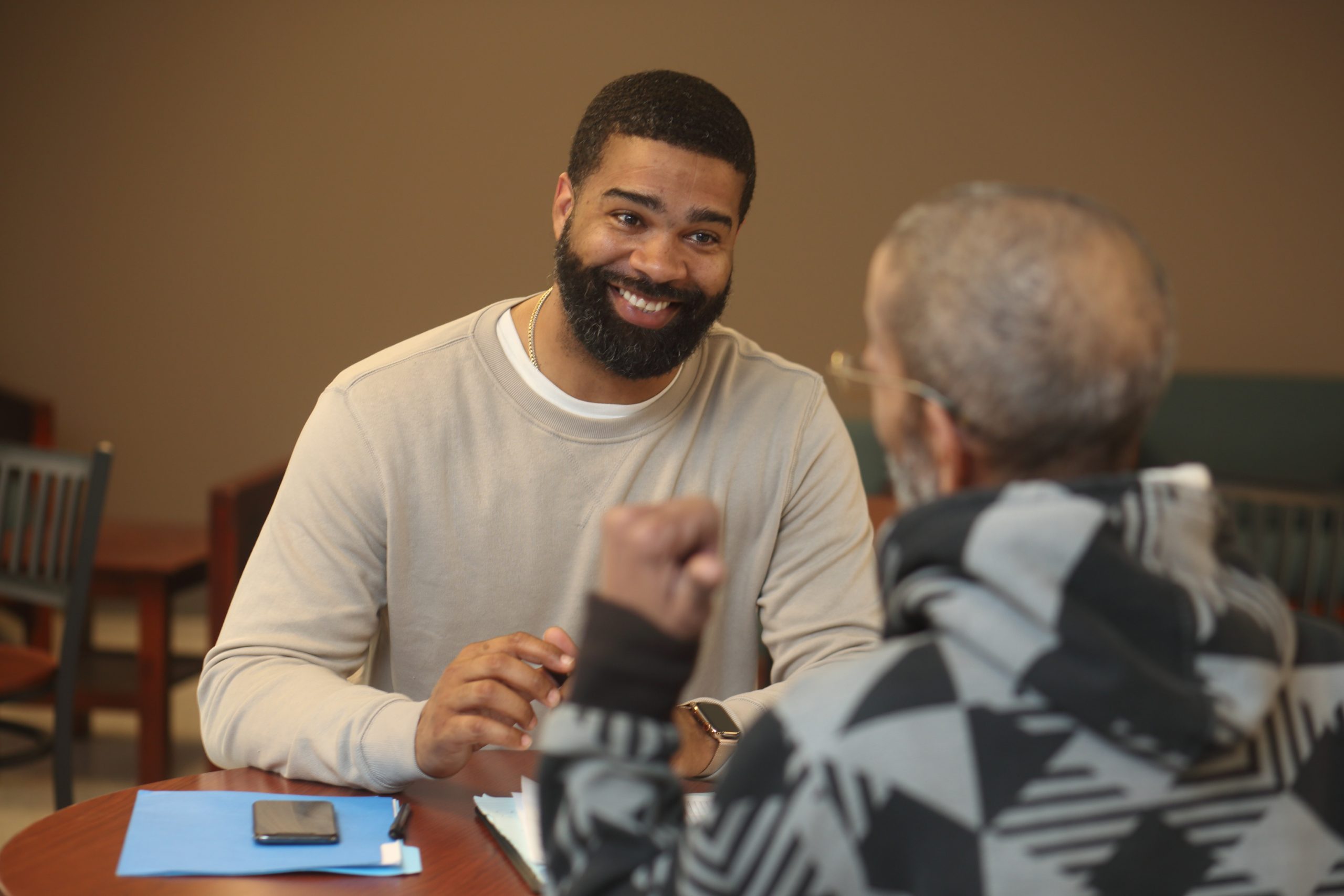How We Help

Transitioning from years of living on the streets to suddenly having housing is not an event, it’s a process. Most of our residents arrive with little more than the clothes they are wearing, and they have no source of income.
We help people reclaim their lives.
Although the vast majority of those we serve are people experiencing homelessness, we also work with small populations of individuals who have suffered traumatic brain injuries and people living with HIV or AIDS.
Below is general information on the key services we provide. Please check our listings to the left to learn more about specific programs offered in each of the regions we serve; Central Virginia, Charlottesville and Hampton Roads.
Housing First
We operate using the Housing First model, which prioritizes access to housing without restrictions such as sobriety or minimum income requirements. This is an evidence-based, low-barrier approach to homeless services built on the belief that housing isn’t something to be “earned”, but something that every person has a right to. Everyone deserves to feel safe and secure.
Further, stable housing provides the foundation to address higher level needs — those factors which contribute to experiencing housing instability or homelessness in the first place.
Our buildings aren’t emergency shelters or typical affordable housing communities. Unlike a shelter, our residents sign a lease agreement and pay rent. Most receive rental assistance resulting in the resident paying 30% of their income towards rent. And we build on affordable housing access by also providing supportive services to ensure that residents remain stably housed.
Case Management
Following the Housing First model, Supportive Services at VSH build on the foundation of stable housing to address higher level needs.
We serve residents and program participants in three ways: on-site in our buildings, through mobile case management in our scattered site programs, and in special populations, including individuals with traumatic brain injuries or serious mental illness. This variety is designed to meet people where they are with services tailored for their individual needs.
This model of providing services is especially effective because it is person-centered. Services come to them or are available where they live. Participation is voluntary and customized to the areas identified by the individual, so they are often more invested in their own success. Our approach to supportive services is holistic, which means that issues and challenges are not addressed independently, but integrated with services that account for the whole person.
A Four-Step Process
Our Supportive Services are intended to address needs based on the lifecycle of a person.
First, we build trust. Our program can be seen as a “too good to be true” offer, and it can take a while to break “habits of homelessness” that have developed over time in order to survive.
Second, we work on developing basic living skills, or activities of daily living. These skills, like budgeting, how to cook on the stove or use a debit card, may have deteriorated over time or never been learned at all.
Third, we focus on the things they need for their apartment, from cleaning supplies and hygiene products to household goods and groceries. Then, after we meet basic skills and needs, an individual may now feel ready to identify and address any bigger picture issues.
This leads us to our fourth step: building mental and social wellness.
Community-building
Support service staff work with our tenants to ensure a strong sense of connectedness in the apartment community as well as with the larger community. At each property there are communal spaces, including a community room, a courtyard, and sitting areas. These spaces are a place for our residents to come together for events and activities, from haircuts and food giveaways to bingo nights and birthday parties. Events like these are put on by both our team at the property and by hard-working volunteers.
Moving On
The ultimate goal of supportive services is to help those we serve to regain stability and independence. For many of our residents and program participants, the final step in their journey is to be able to move out of VSH housing into housing of their own.
To support individuals in this transition, we created our Move On program. Through Move On we are able to identify interested residents and work with them to create individualized plans preparing them to move out of permanent supportive housing and live independently. This could include helping them get a housing voucher and income to pay for rent and utilities. We discuss building a social support system. We help them find housing that meets their needs in terms of location or amenities. Then, once they move out, we provide supportive services for up to a year, which helps ensure that the transition into stable, independent housing is sustainable and successful.
Through Move On, we can support residents in their journey back to independence while opening those units of permanent supportive housing for individuals still experiencing homelessness.


